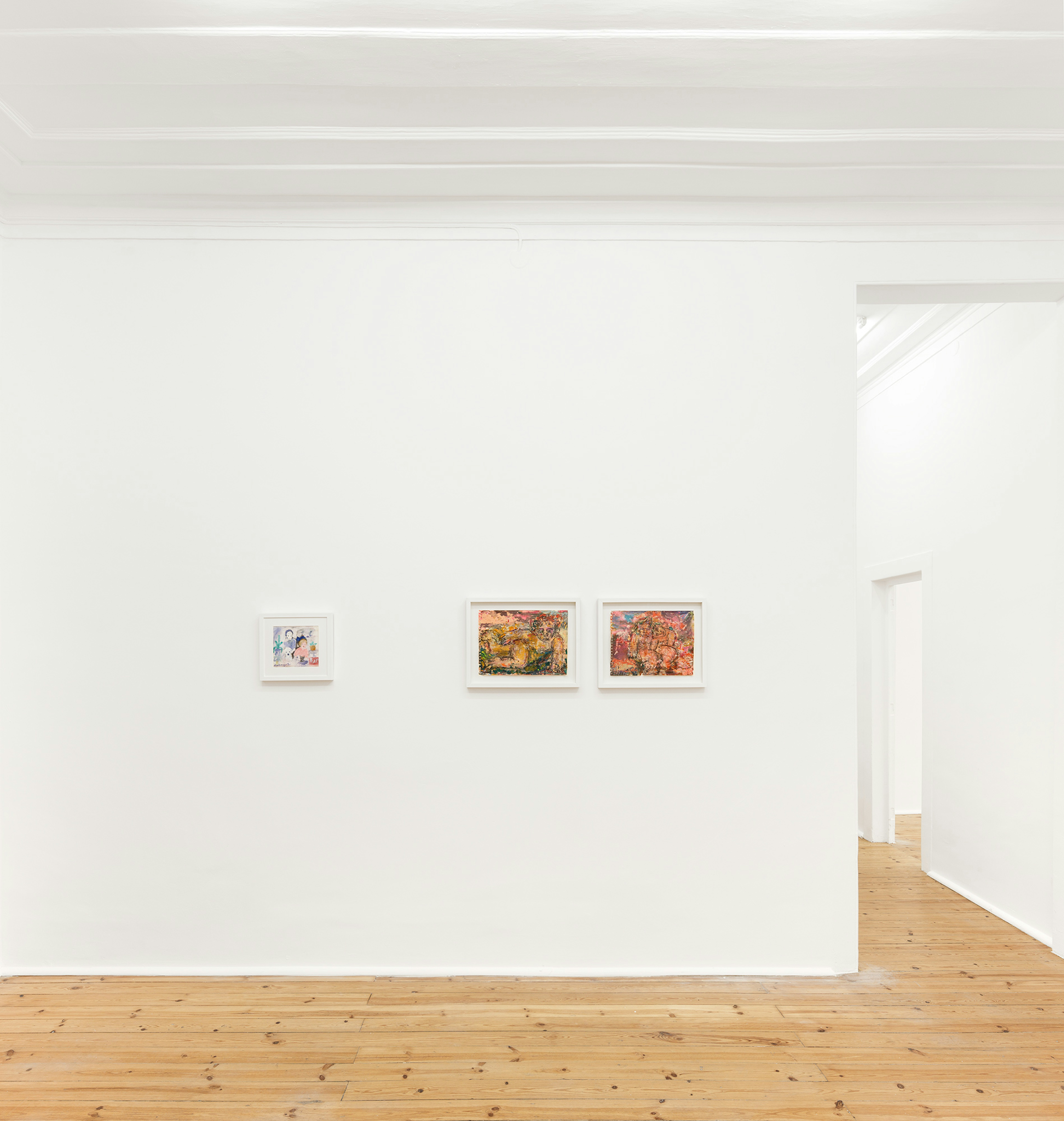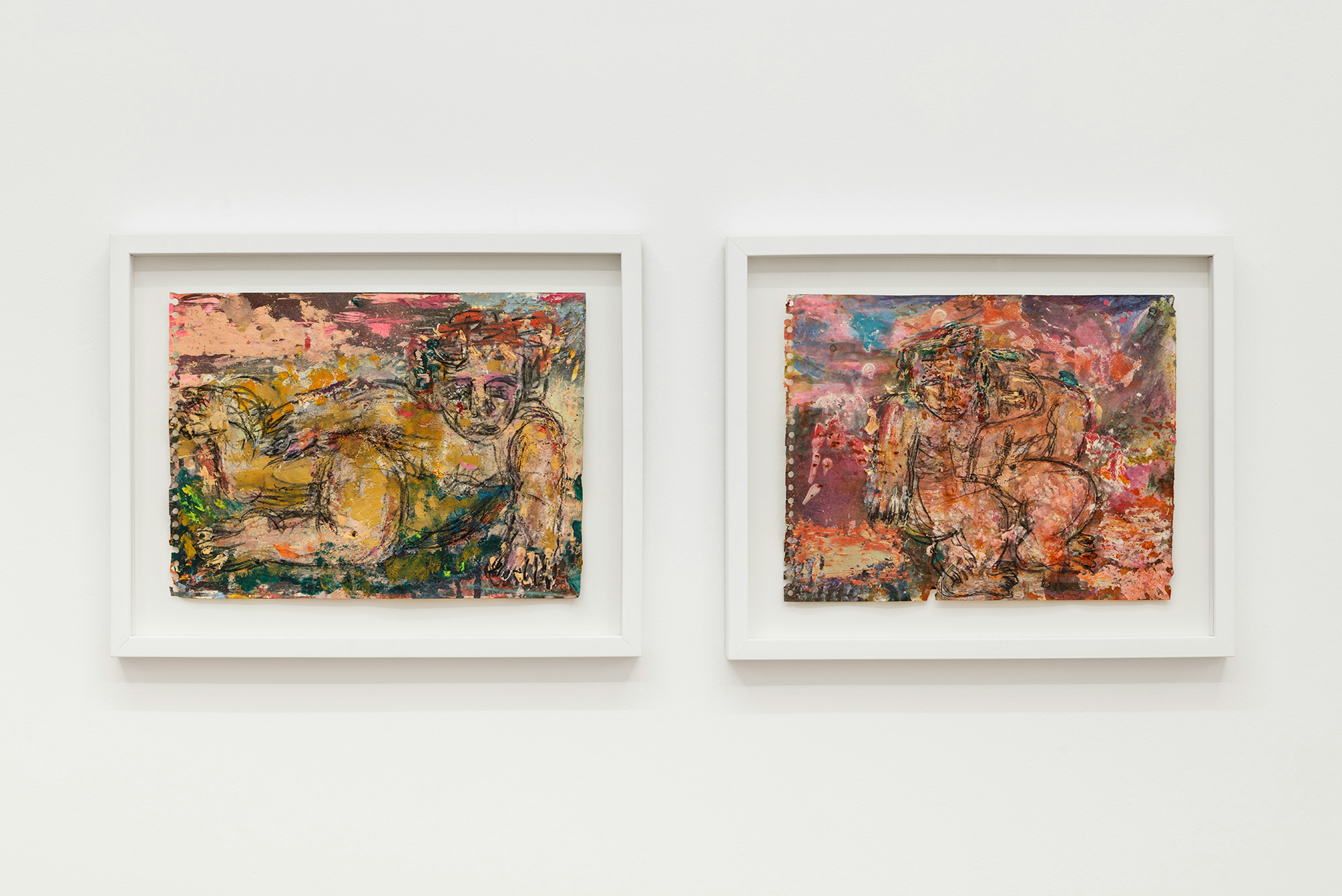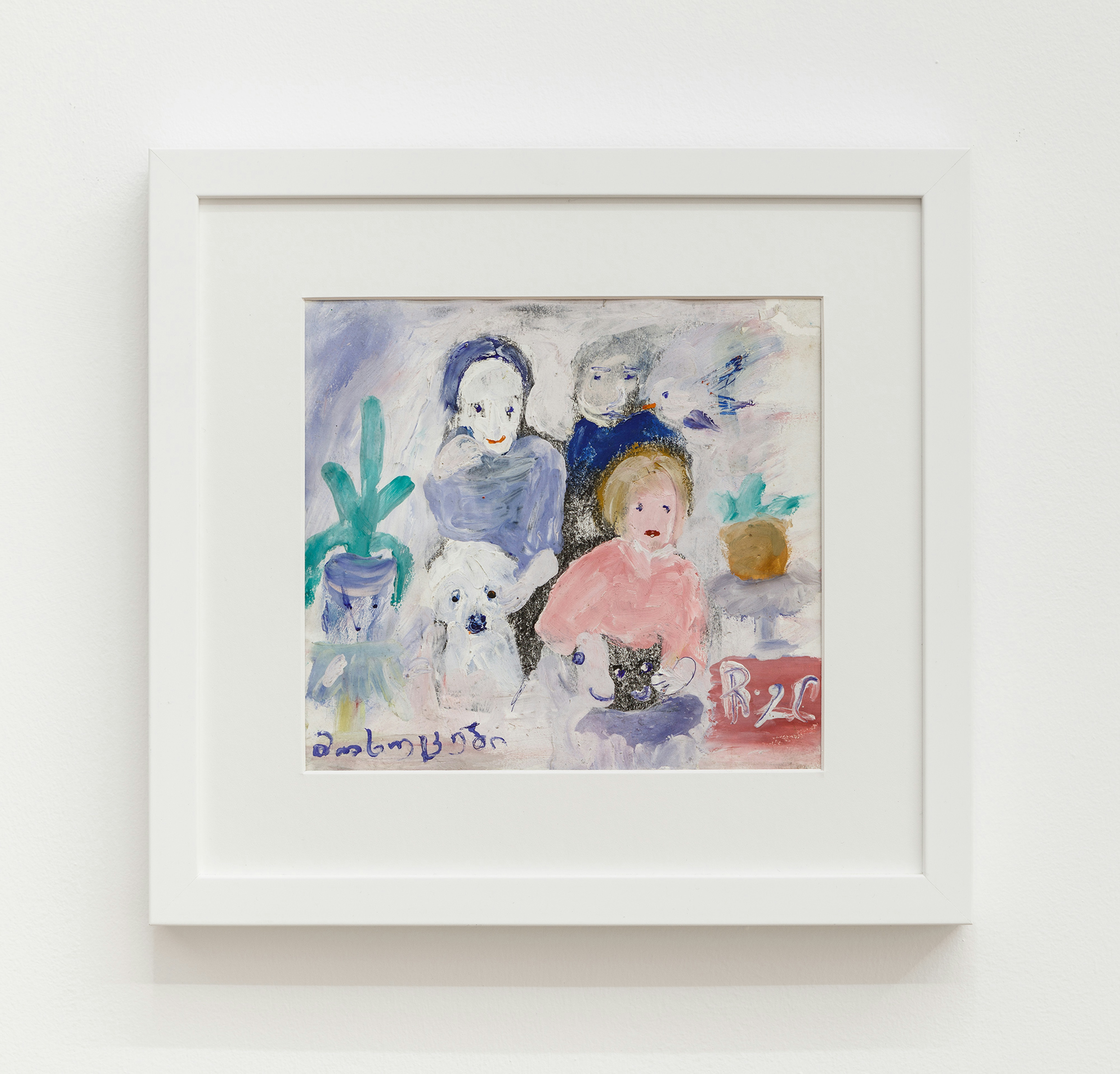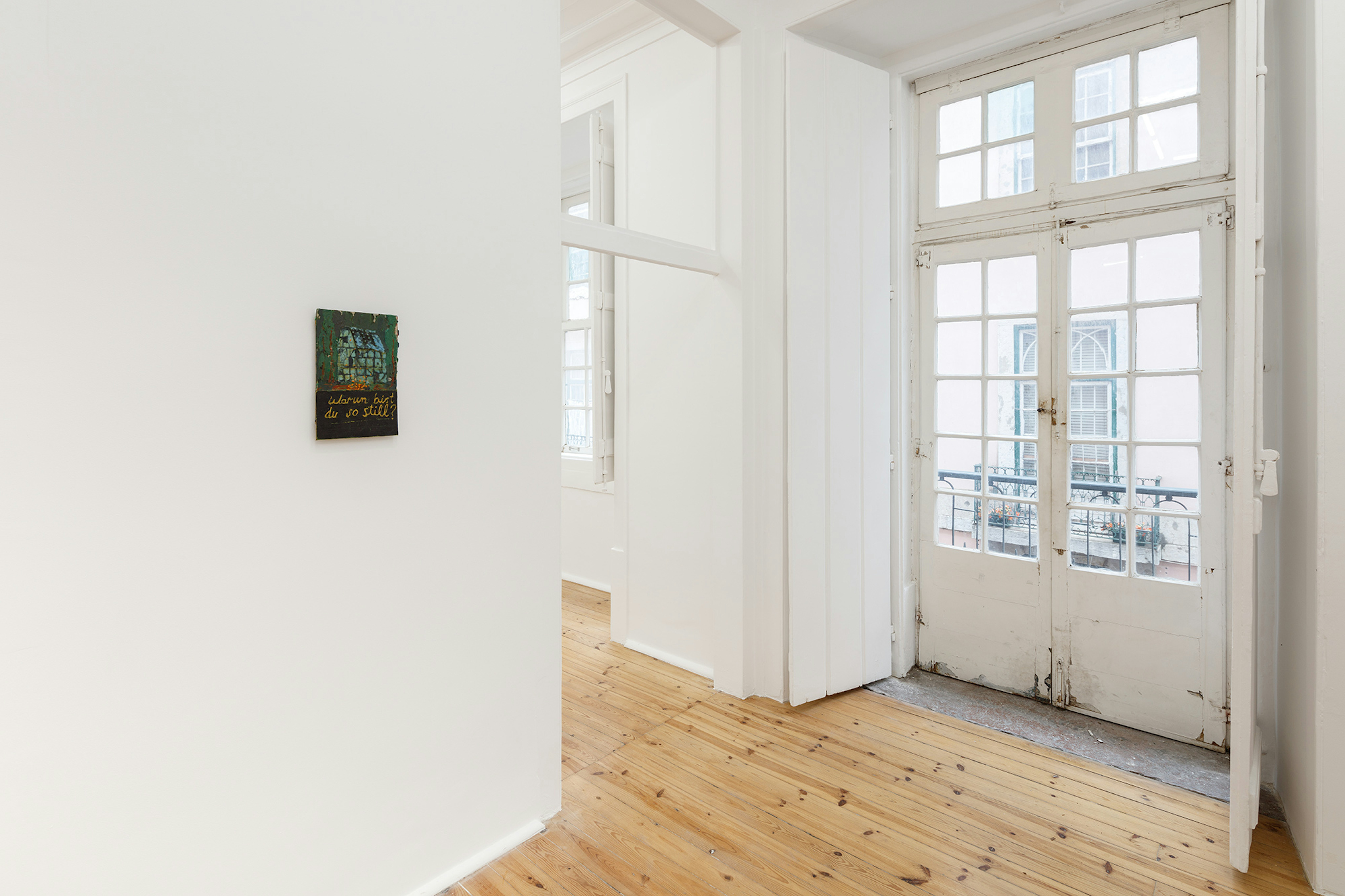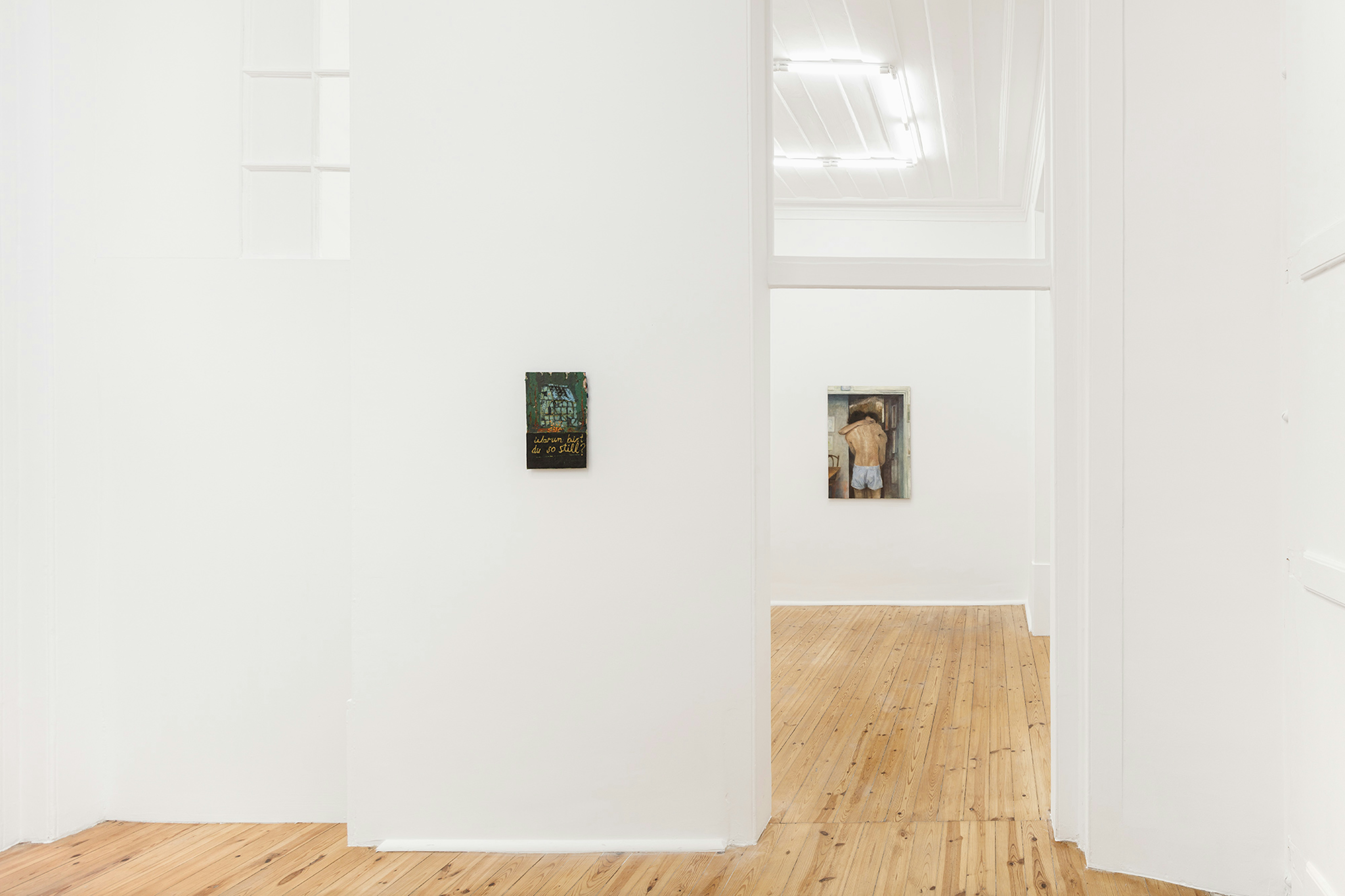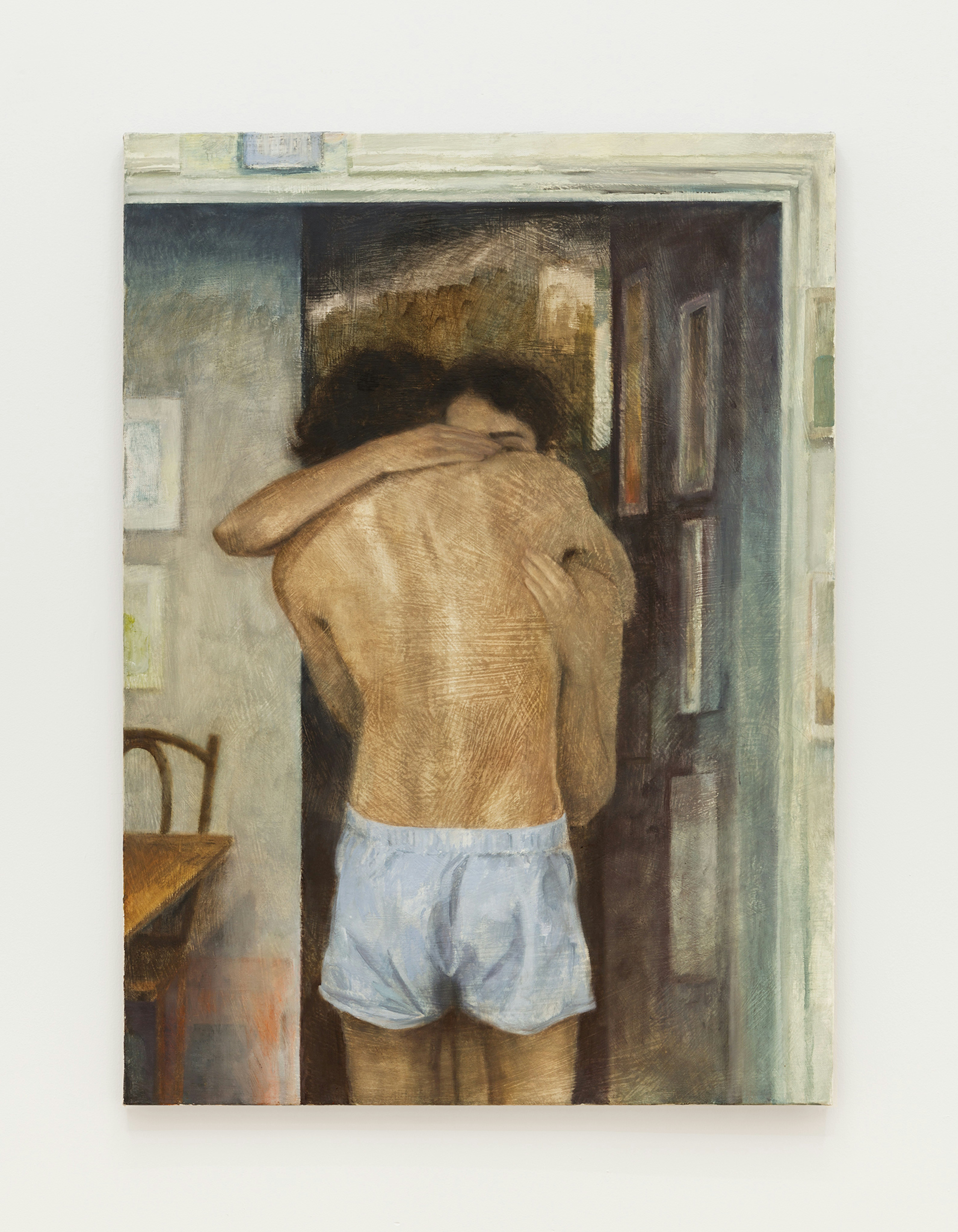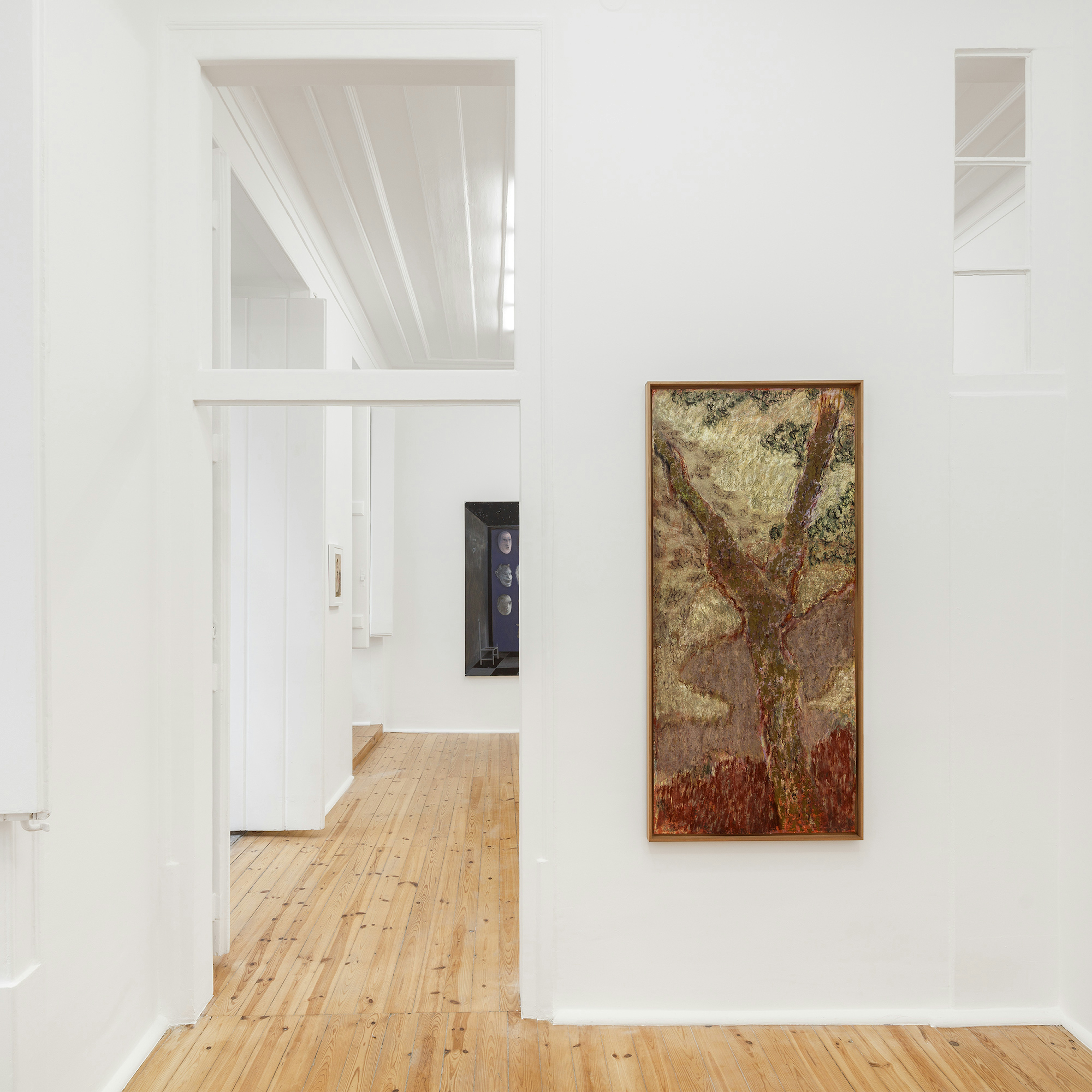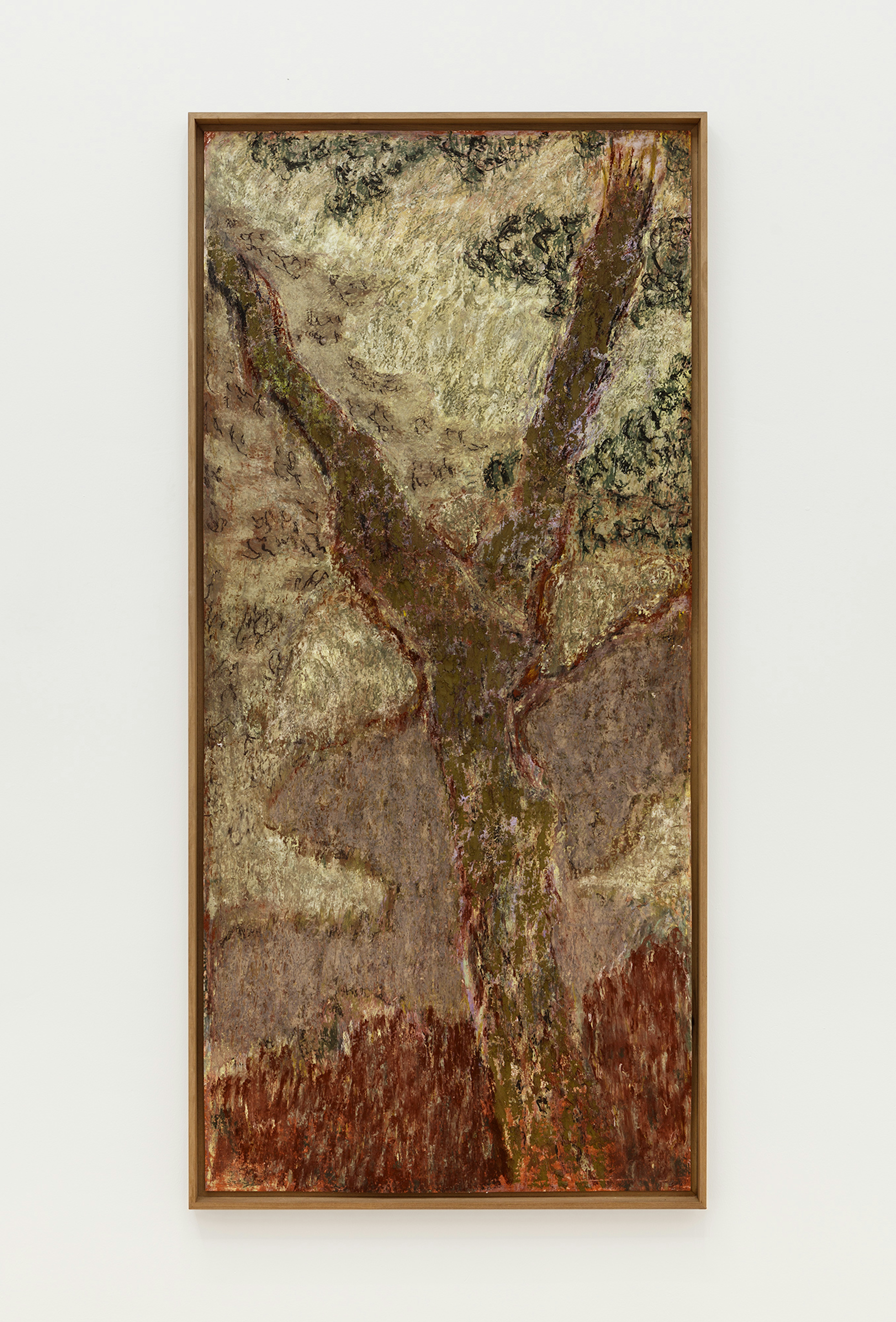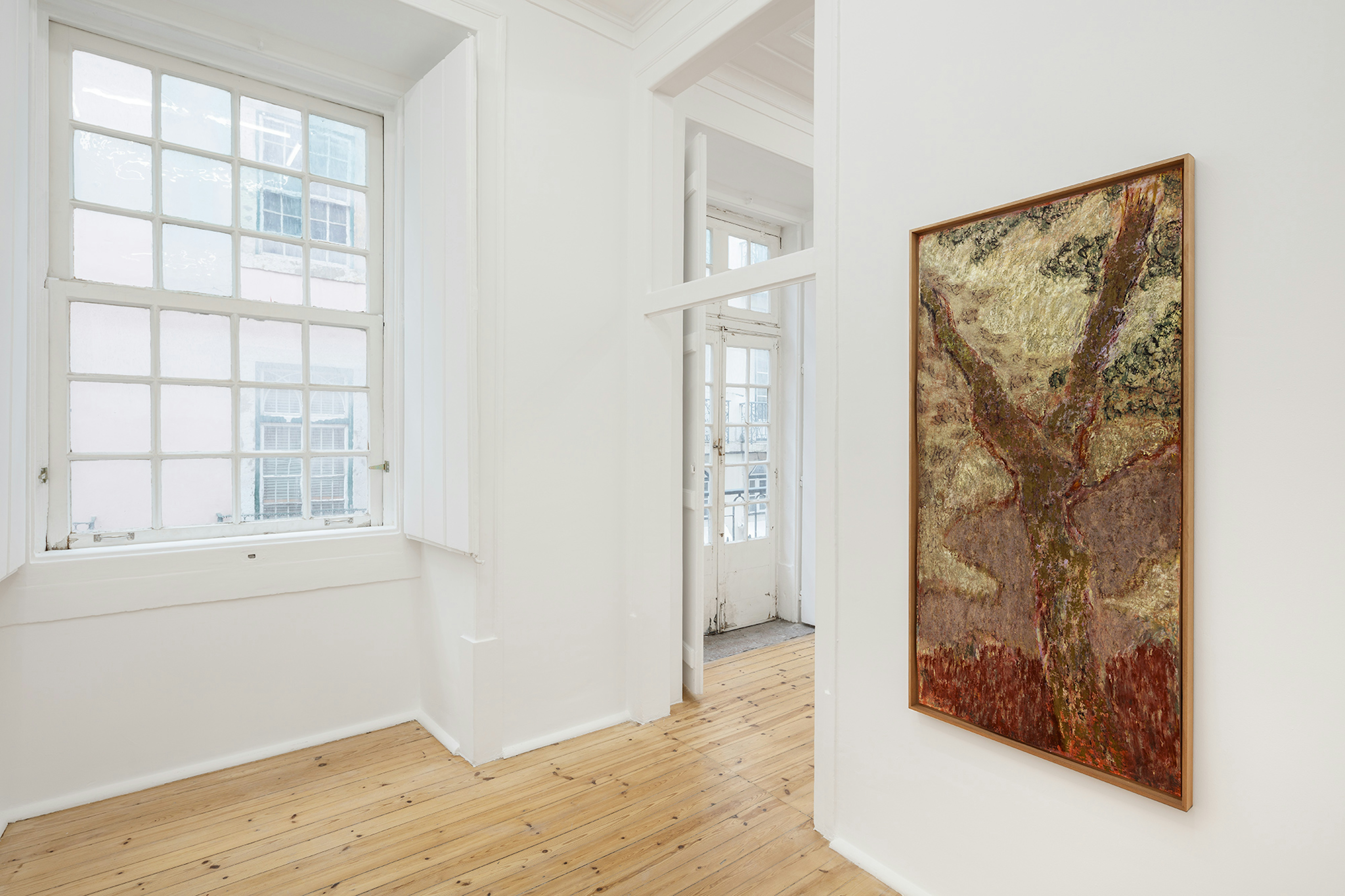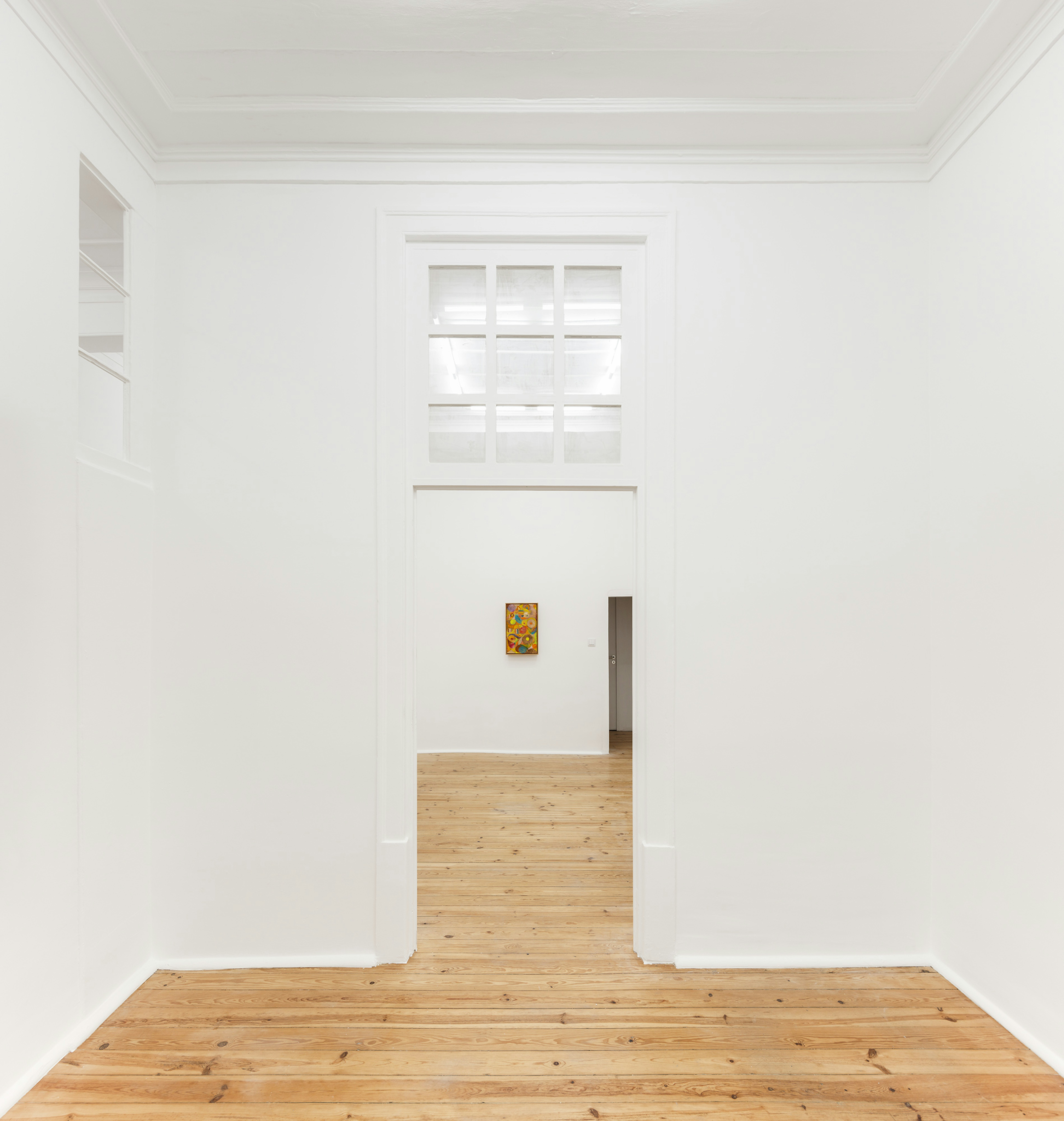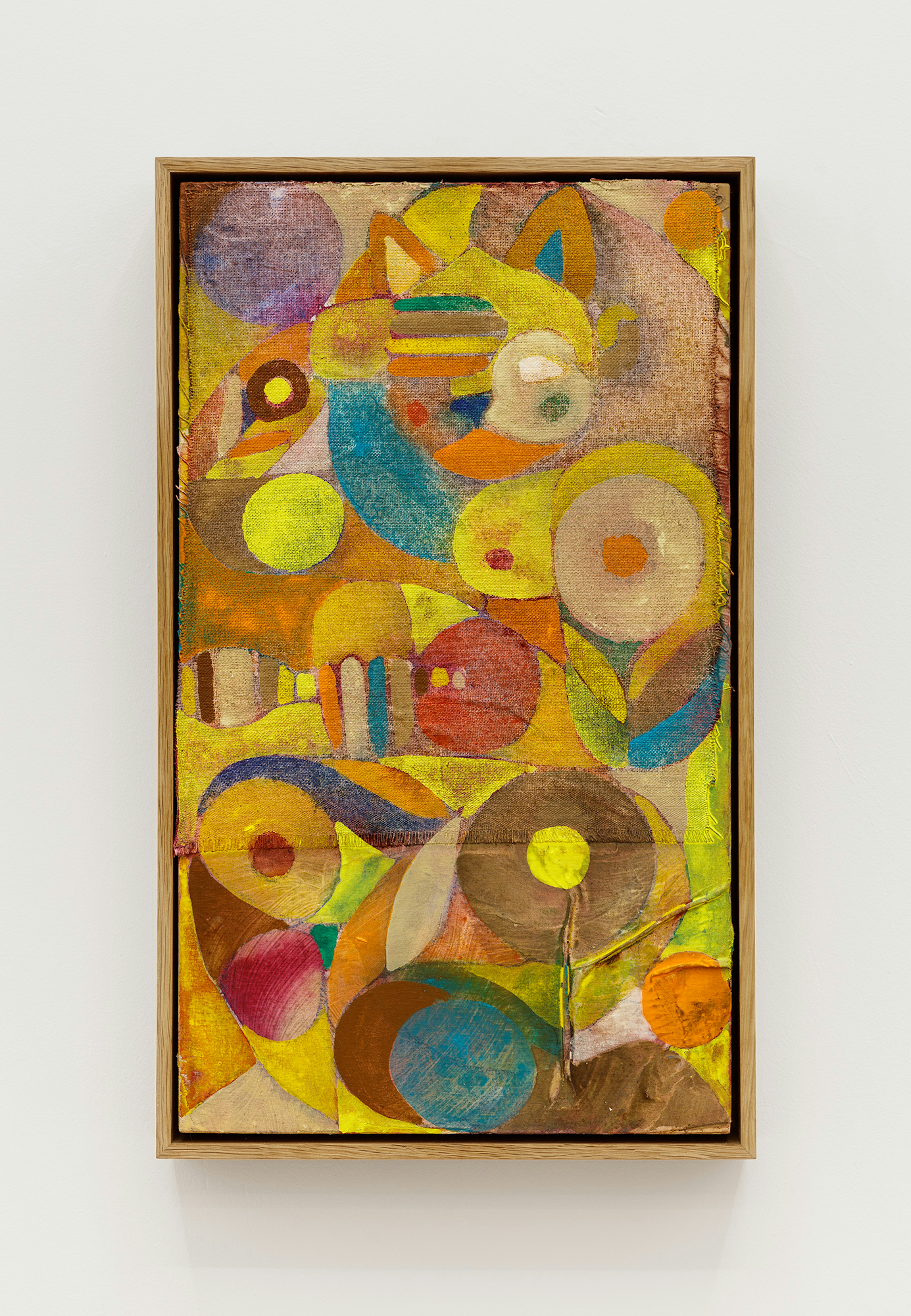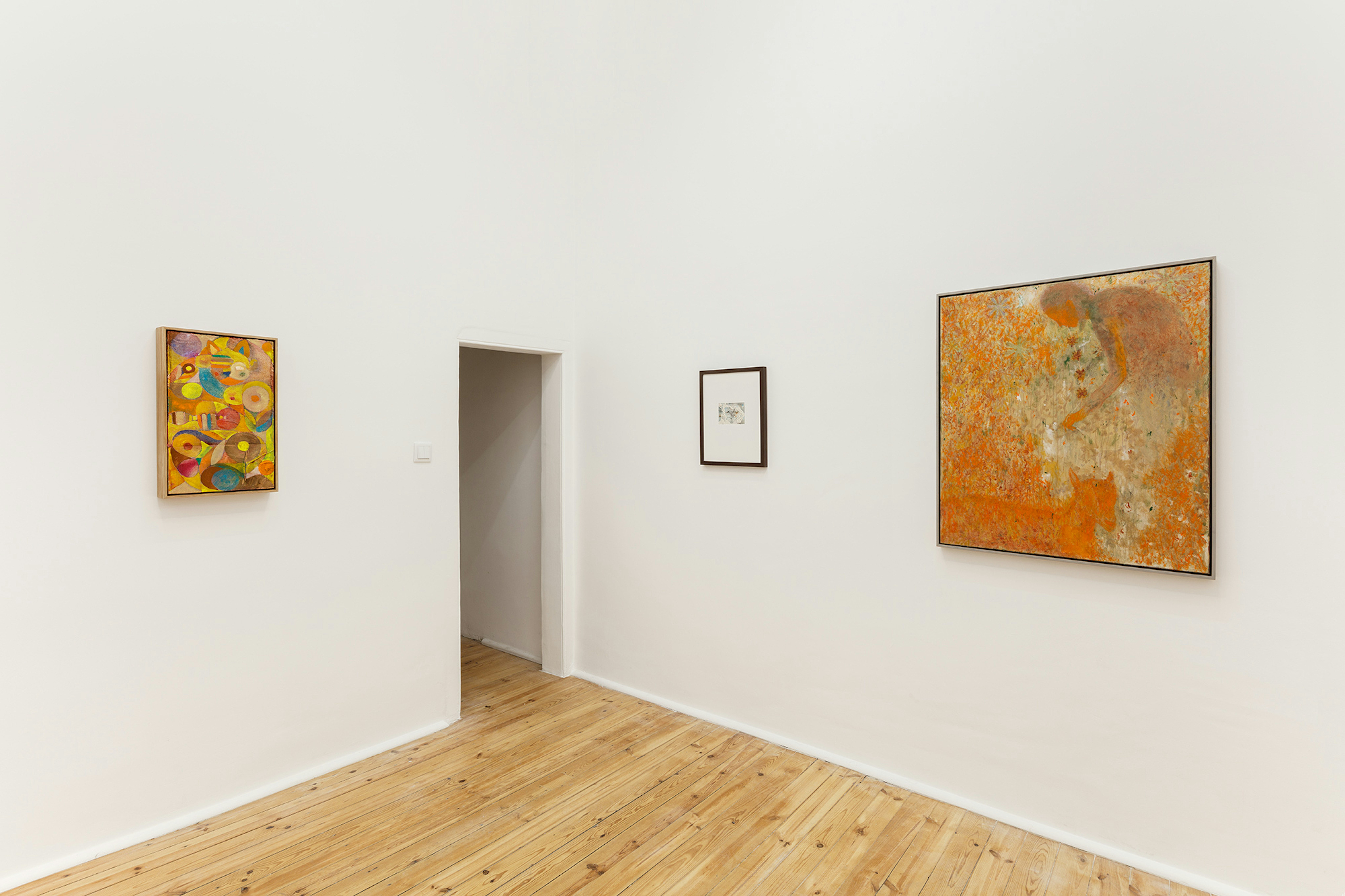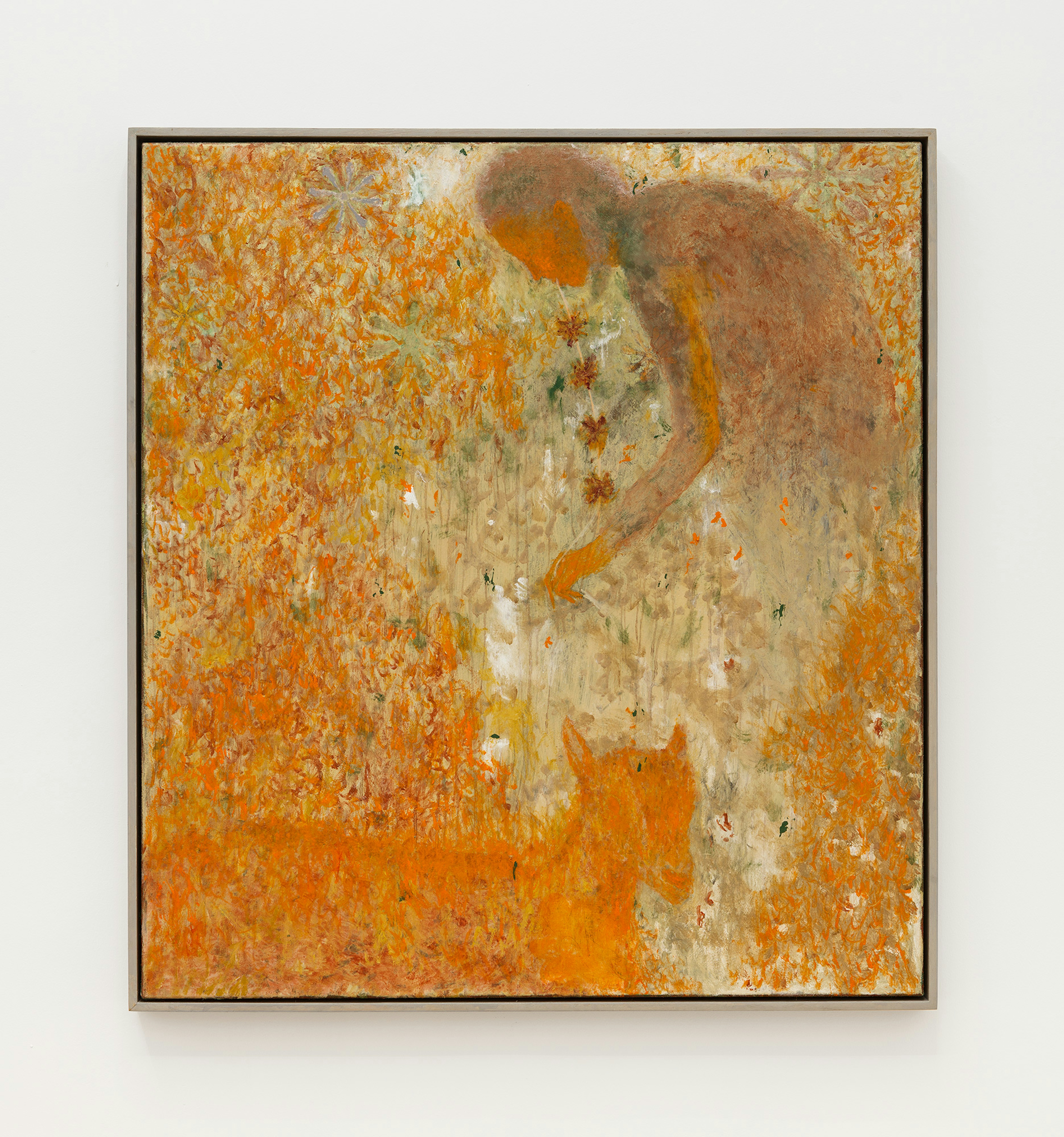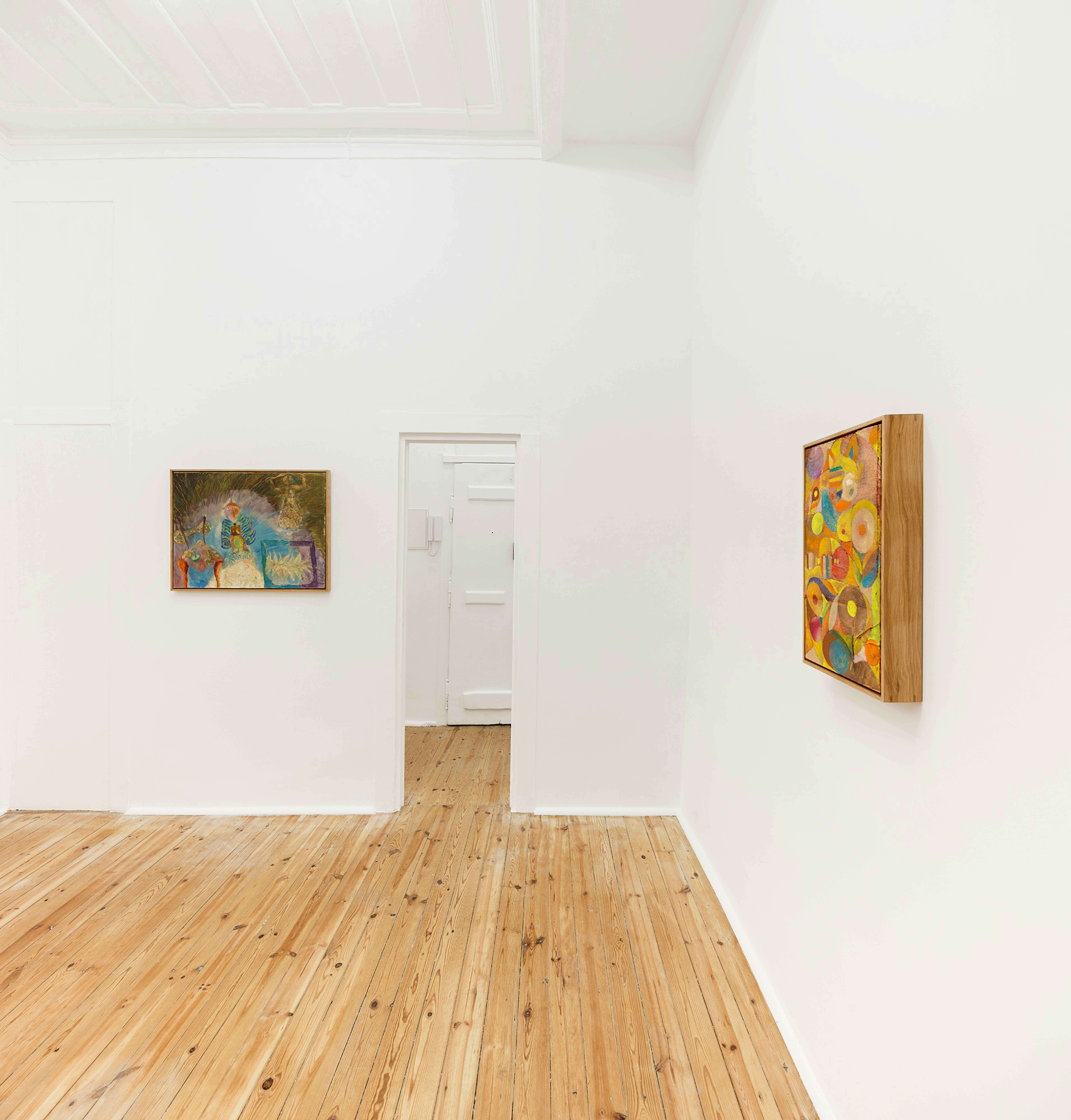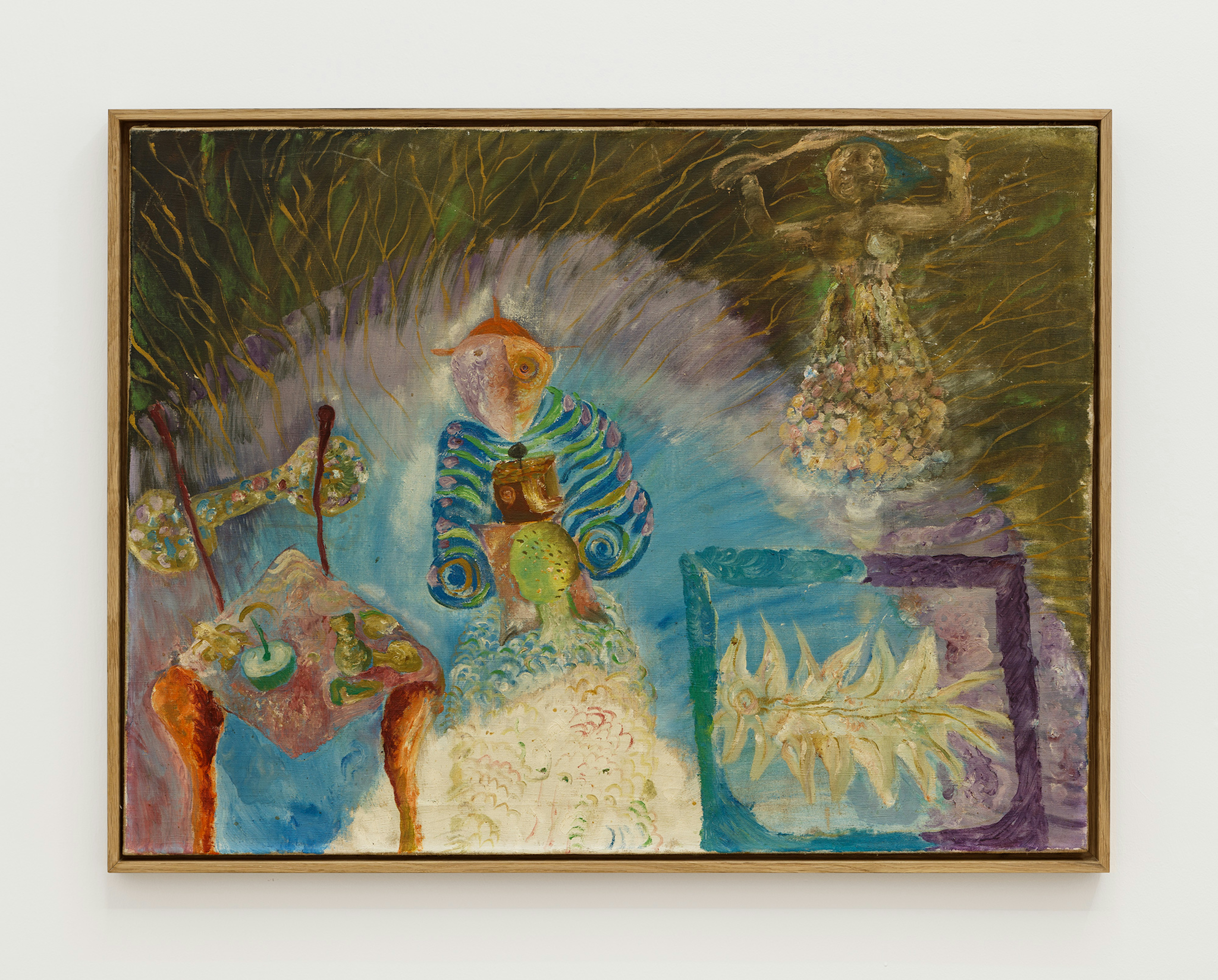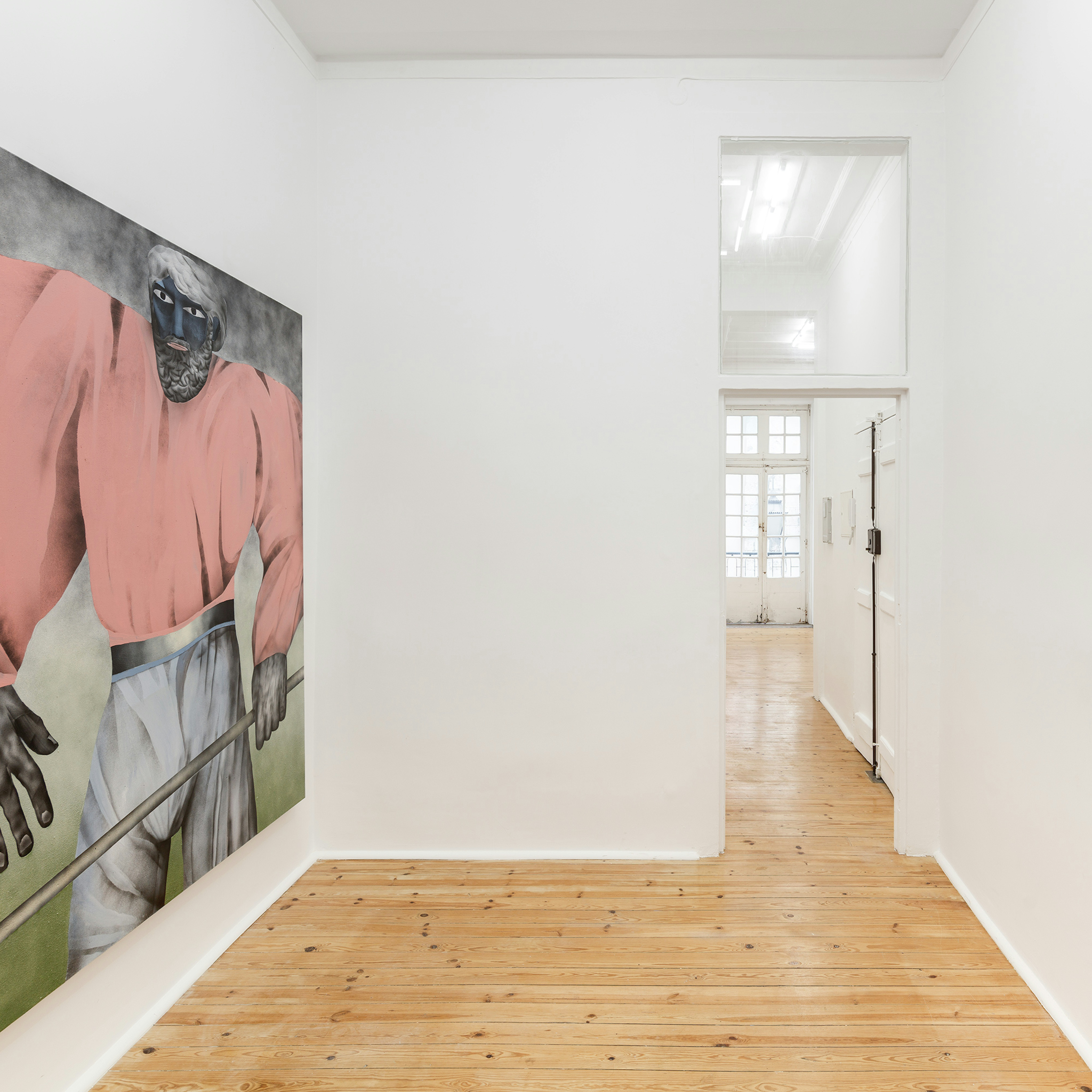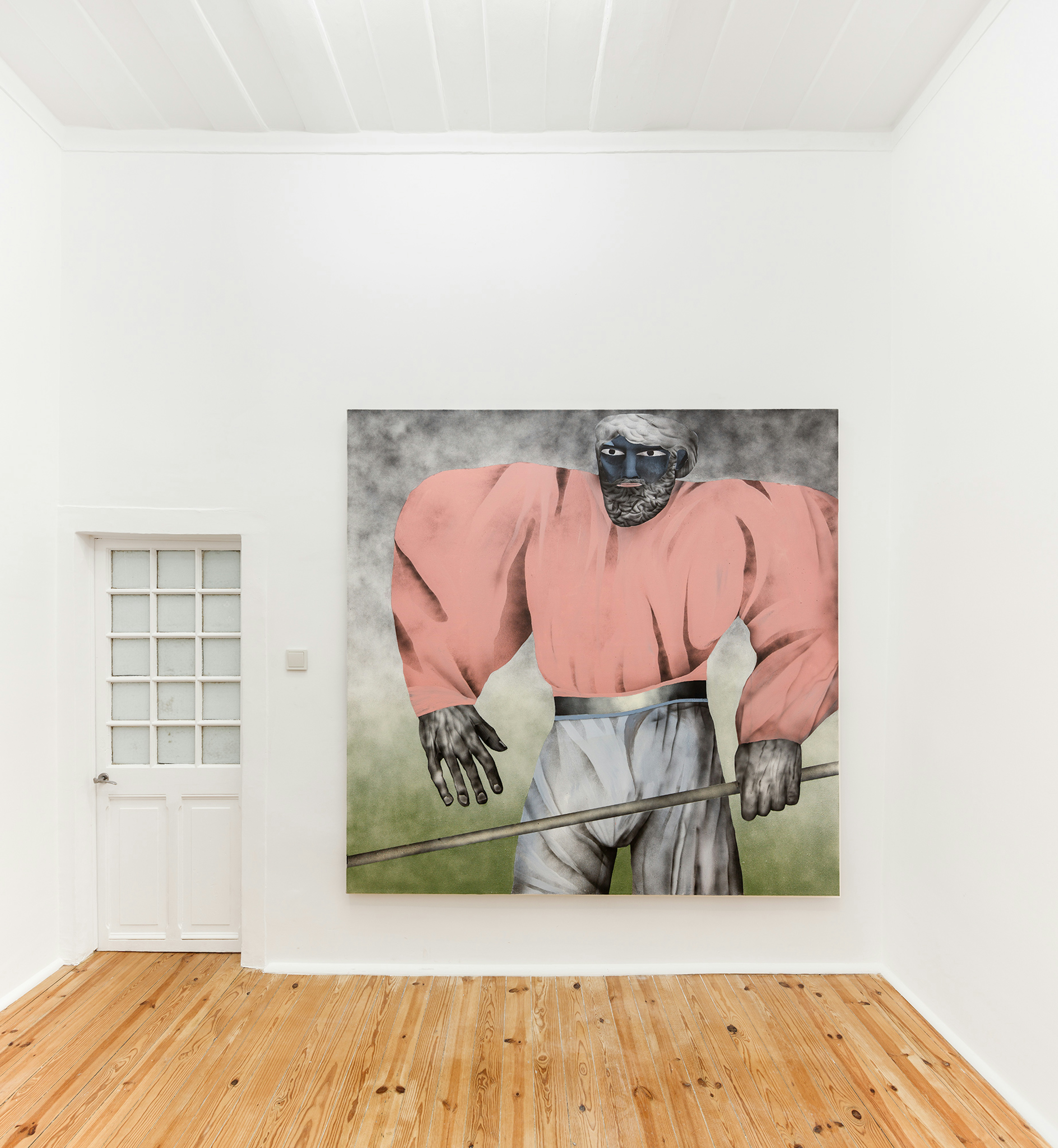ADZ
Rua do Crucifixo 28, First Floor, Lisboa
Wednesday–Saturday 11–5pm
info@adz.gallery
+351 932 989 202
Fragments
Oliver Bak, Ljiljana Blazevska, Elene Chantladze, Andrew Cranston, Daniel Crews-Chubb, Nathanaëlle Herbelin, Vojtěch Kovařík, Tomas Leth, Christian Quin Newell, Anj Smith, Alexander Tovborg
“Fragments” is an exhibition that engages with historicism, nature, particles, and relationality. The works on view slip into one another seamlessly, presenting a bacchanalia of ardor, romance, gnosis, and exploration.
There are aspects of both Symbolism and Art Nouveau present here. These concurrent and deeply interconnected styles developed around the turn of the 20th century and were a reaction against the mimetic historicism in vogue at the time. Toulouse-Lautrec and Beardsley mined the potential of linework in order to produce lithe, organic compositions. Both participated in the Art Nouveau movement, thus engaging heavily with decorative techniques and natural elements. Anj Smith’s Potential inculcates this precedent by clarifying the subject’s contours with undulating lines. Smith offers a suffusion of ambiguity and grotesquery on the paper’s surface, therefore securing its novel context by way of challenging antecedents with new symbolic systems.
Gustave Moreau and Odilon Redon were Symbolists who explored the boundaries of representation and interrupted classic modalities, thus making way for a new frontier of artists to contemplate meaning and style. In his 1886 Symbolist Manifesto, poet and early proponent of the movement Jean Moréas asserts that the “essential principle of art is to clothe the idea in sensuous form,” a conceit that operates as a critical pivot away from the traditional mode of imitation in painting. Lines blurred and colours harboured emotive promise. The Symbolists ensured that realism was dashed by sensuousness. This is manifest in Thomas Leth’s tender depiction of a lavender river flowing through a muted landscape. A sensual tree-form occupies the foreground of this canvas. It is chiefly rendered in olive, with slivers of violet and wine punctuating its frame. Oliver Bak’s figures also offer a reprieve from exactness, their anatomies frayed at the seams by gouache and pencil markings that appear to melt into the canvase’s surface.
The language of Gustav Klimt is suffused in the works comprising “Fragments.” His aptitude for spectral figures and concupiscent symbolic matrices cemented his role as a vanguard of the new painting styles. He made indelible contributions to both Art Nouveau and Symbolism, with a propensity for illustration and decorative technique alongside lavish embodiments of the human psyche, he participated on both sides of the court. This ability to reflect different approaches remains a postmodern endeavour. Daniel Crews- Chubb’s canvases brush up against this lineage while offering a Baselitz-like predilection for the messied, somewhat perverse subject. Crews-Chubb’s evocation of form is in dialogue with Alexander Tovborg’s kaleidoscopic abstractions as each artist eschews a strict representationality and instead builds their subjects from distinct symbologies and archetypes. selvportræt på barsel offers swathes of acrylic and pastel that fold into each other, producing a networked system of luminous shapes. Still, Tovborg’s thick yellow surfaces mirror Klimt’s gold leafed canvases and a predilection for geometries further supports a connection between the two artists’ approaches.
There is a certain Nabis sensibility on display. This French cohort of artists operated against the grain of impressionism and aided in the manifestation of a Symbolist epoch. Paul Sérusier, Pierre Bonnard, Edouard Vuillard and Maurice Denis were key players in the movement, each contributing their own lens to a project mired in decoration, texture, and dissolving the borders between art and design. Experimentation with surfaces ensued as these painters explored the application of materials on alternative canvases such as velvet and cardboard. Andrew Cranston’s Why are you so silent? appears in the exhibition as an ode to this modality, as a book cover offers refuge for his oils and varnish. The picture plane is split in two; A turquoise building swims in an ashen fog with evergreen trees and a petrified burst of tangerine pigment, below this scene it reads “Warum bist du so still?” in yellow cursive. Signs and symbols propagate and Denis’s The House At The Edge Of The Wood comes to mind as it too offers no real answers, only affect and a scene hidden behind a veil of smog with details obscured by the artist’s ability to render softened edges and enigmatic shapes. Elene Chantladze’s mixed media works on paper and cardboard also fall in line with the Nabis framework, as her subjects are enchanted by the history of impressionism in conjunction with Symbolist leanings. Her productions harken back to Paul Sérusier’s serene renderings of Brittany landscapes. In particular, Elderly presents the viewer with what appears to be a family portrait replete with vague plants and animals. There is a tension at play, one that precludes vivification. The pale hues and ominous features give nothing away, there are merely impressions of facts.
Time and figure liquify, their rifts discerned by the viewer’s own wisdom. By way of intuition, one reads fragments as contingencies primed for elucidation. The conceits of Heraclitus are aligned here as his strain of philosophy is only accessible through bits and pieces, tethered in retrospect by a bevy of secondhand translations and interpretations. With his conception of universal flux and aptitude for oppositions, Heraclitus laid the groundwork for a certain reconfiguration of real understanding, one in which didacticism gives way to the observer’s intuition. One is moved to take stock of disparate aphorisms and gestures and make due with the materials offered. Each artist presents a composition divorced from any specific era. There are historic gestures, some more laden than others, though the works on display revel in a post-epochal spirit. This is a liberation from finitudes, a turn toward an atmosphere of discovery and incisiveness. What is the language of the 21st century? One that is intensely rhizomatic at its core. According to Friedrich von Schlegel’s axiom, “Artists make mankind an individual by connecting the past with the future in the present.” Fragments and histories therefore appear as vectors for potential. We deal with what we are given, trusting sagacity to guide us through the trials of understanding.

